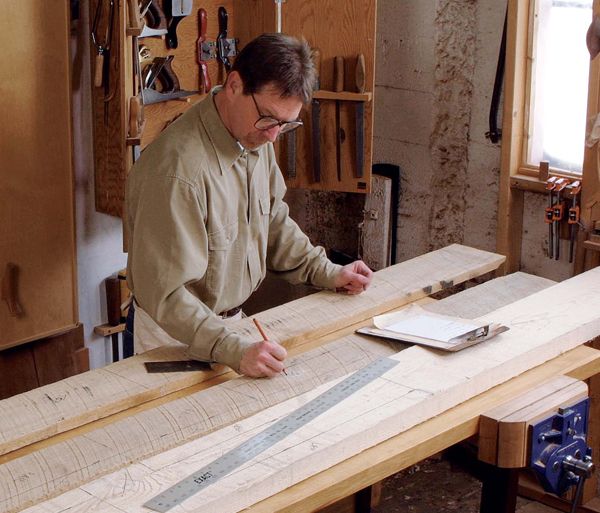How to Get Square, Stable Stock
For best results, rough-mill the wood, allow it to stabilize, then finish-mill
Synopsis: Transform rough lumber into square and stable stock with this foolproof milling process described in detail by Fine Woodworking contributing editor Gary Rogowski. His guidelines are direct and helpful—leave bad boards at the lumberyard, for instance—and they’ll save you headaches. He details the entire process, including selecting rough lumber, drying and acclimating lumber in your shop, rough milling, stickering, and finally jointing, surfacing, ripping, and crosscutting to final dimensions. He shows how it’s done and the order it’s best to do it. Along the way, you’ll learn how wood cups and crooks.
From Fine Woodworking #165
Take a piece of rough wood, fresh off the woodpile or lumber rack. Now transform that coarse stick into a square, flat piece of stock with parallel sides and ends, suitable for your latest project.
It seems to take a sort of magic sometimes to make flat and smooth what starts out twisted and rough. The importance of this feat, however, cannot be overstated. If you lay a foundation of accuracy with your milling, then your joinery and assembly have a much better chance of going together smoothly and sweetly.
I am focusing here on milling rough lumber, as opposed to material already surfaced on two or four sides. When starting with rough lumber, you’re not bound by the thicknesses that are commonly available in surfaced stock. Also, rough stock is less expensive. And there is no guarantee that surfaced material is truly flat or straight anyway. That leap of faith has gotten many a woodworker into trouble. So proper milling practices are important in any case.
Wood is alive. It moves despite our best efforts to keep it flat and square. How can we mill it straight and flat and then keep it so? Start by learning to read lumber to get a better yield with fewer defects. Learn to recognize end and surface checking, cupping across the width, bowing along the length, and twisted sticks. The first step toward having square, flat, stable stock is to leave bad boards at the lumberyard.
Wood movement is dependent on the difference in moisture content from the outside to the inside of the board, so where your lumber is stored along the way also becomes important. Consider the relative humidity of the lumber dealer’s facility and your work area. For example, if the stock is kiln-dried but went from outside storage to your shop, you may need to let it acclimate for a few weeks before milling it.
As lumber dries in a kiln or elsewhere, different areas can dry at different rates, and internal stresses can develop that cause the board to move. By the time you get it, the board probably has stabilized, with its internal stresses in balance for the moment. However, when you cut the board into pieces or remove material from the outside, the balance of forces can be disturbed, causing the board to crook, twist, bow, or cup. In the rough-milling stage, cut the boards a bit oversize and then wait for the stresses to work themselves out again. This may seem like piling more work onto an already big job, but it actually saves time and material. Rough milling won’t stop wood from moving, but it leaves enough material to accommodate the movement.
For the full article, download the PDF below.
Fine Woodworking Recommended Products

Ridgid R4331 Planer

Bessey K-Body Parallel-Jaw Clamp























Log in or create an account to post a comment.
Sign up Log in